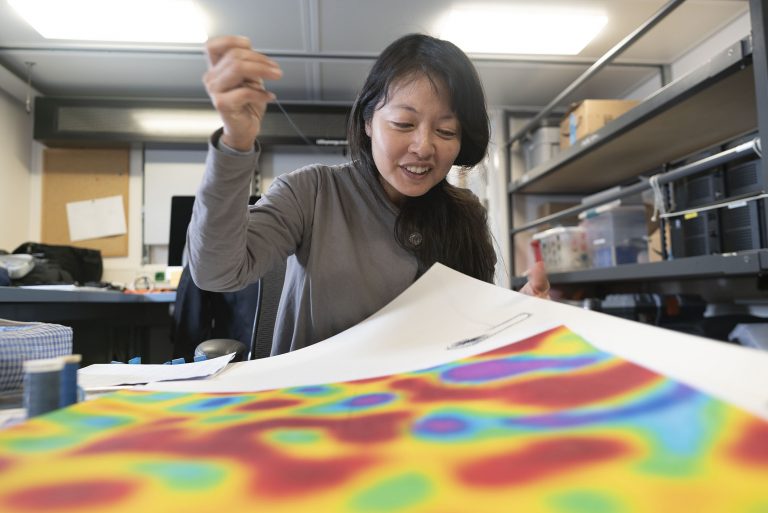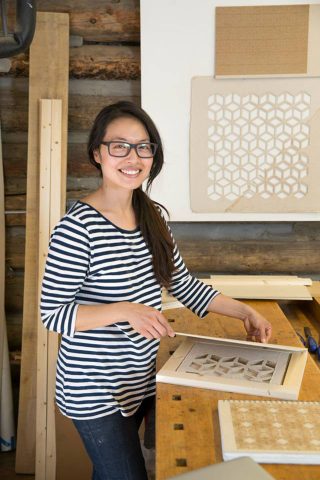We have passed the halfway mark of our cruise’s journey having sailed over 3,200 nautical miles during the past eighteen days. The Schmidt Ocean Institute’s ROV SuBastian has made eight dives so far to depths ranging from 1500-2400 meters deep at the seamounts; Hess Rise, Suiko (north end), Suiko (south end), Yomei, Godaigo, Nintoku (deep), Nintoku (shallow), and Jingu. I was able to witness an amazing show – in real time – of the ancient and young corals, sponges, and other deep sea life observed through the ROV Cam. I can not imagine now how any other live streaming video can compare to seeing nature’s beauty in the deep ocean. Read on to learn about the first two projects I have started while onboard the Falkor, inspired by eddies and by some of the collected specimens we have acquired from the dives.
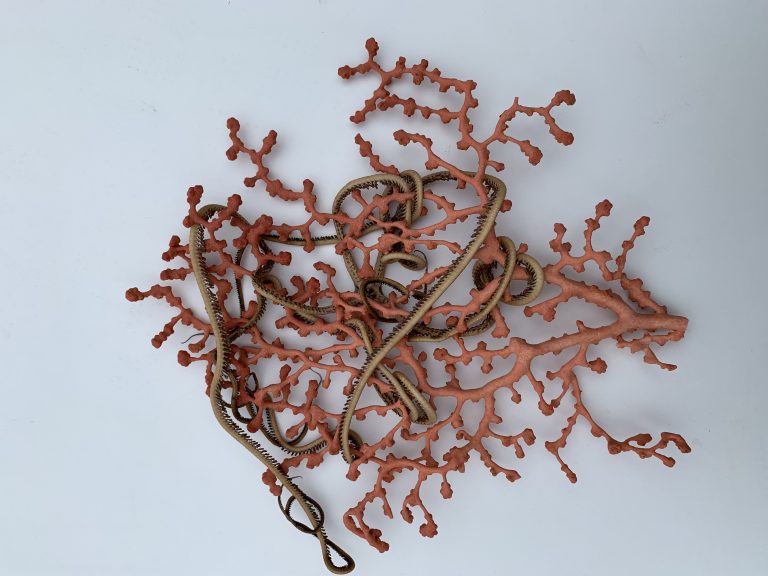
Mesocale
The swirling of ocean water into currents that flow in a somewhat circular motion are known as mesoscale eddies, with the rotation dependent on the temperature and salinity of the water masses inside and outside the eddy. Cold eddies rotate cyclonically and warm rotate anti-cyclonically. I have been embroidering on paper the estimated averages of the eddies located in the rough area our cruise has been conducting dives. I am using the gradient numbers that characterize the Bell curve for each eddie calculated by Glenn Carter, associate professor in the Department of Oceanography at UH Manoa, to determine the stitching pattern. Since our region of research is in the northern hemisphere, I use cooler tones stitched counterclockwise for eddies under the sea surface and warmer tones stitched clockwise for eddies above.
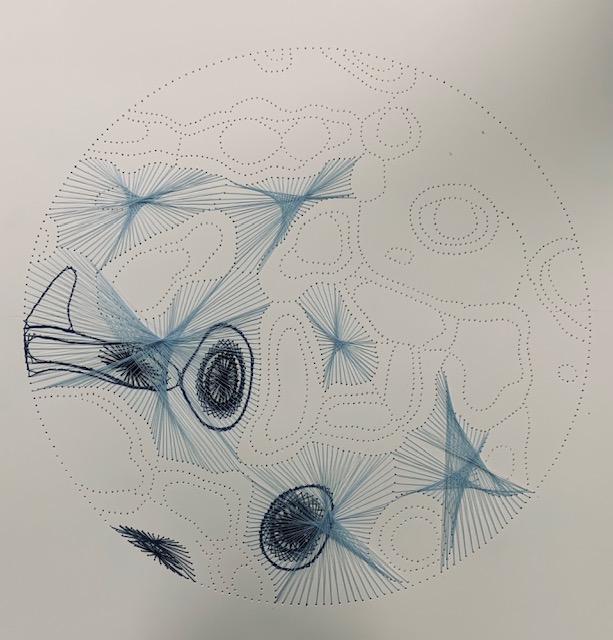
Naked Eye
During each dive, the ROV collects specimens as designated by the scientists watching through the live video feed, observing the organisms in their habitat. After the specimens have been documented and preserved, I have been capturing some of them using the Autodesk photogrammetry program ReCap Pro to create an archive of 3D scans, and ROV Supervisor Jason Rodriquez has helped me to 3D print them at various scales. Chief Engineer Allen, with Fitters Edwin and Alex, modified a piece of equipment to create a small platen press where even pressure is applied to transfer a low relief pattern or texture to the surface of a piece of paper or other thin substrate. We used this process to transfer the surface topology of the 3D printed object made from the HES102-1 sample to paper, as well as to a piece of tin sheet. I am now preparing a series based on the antiquated look of ceiling tins to reference how the corals we observe today may become extinct and part of our history.
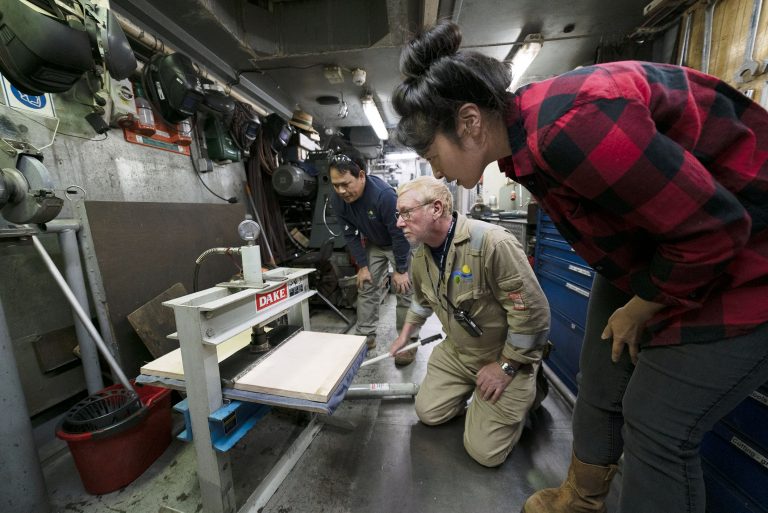
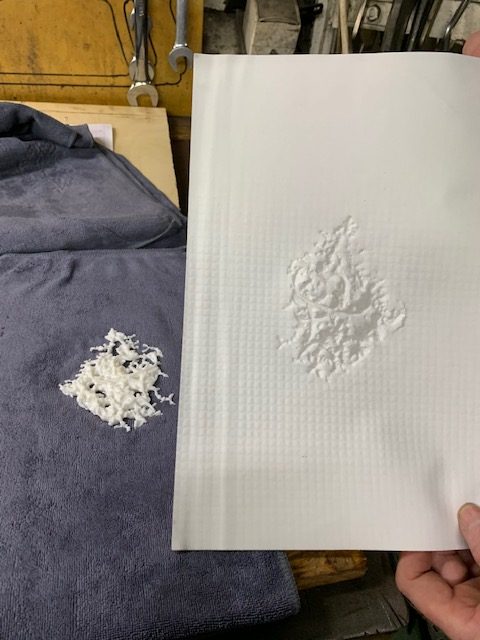
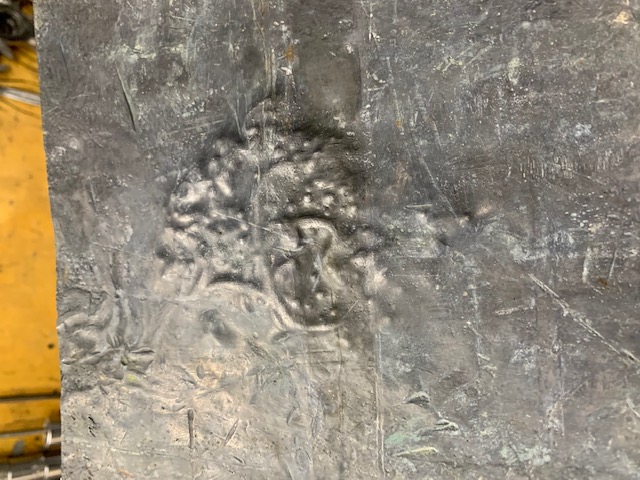
Coming Up…
When we observe these corals, sponges, and other organisms, there are similar characteristics they share – yet when their DNA is analyzed, they may be from totally different families. I am curious about this occurrence as well as another research question begging to be investigated on board: how does the environment trigger similar morphology across diverse species? Of the variety of characteristics exhibited by the collected specimens and viewed in situ, I am amazed by their surface quality, textures, and colors. We are able to see these with a light source from the ROV, but what do the inhabitants “see” in the deep dark abyss? Perhaps textures and touch interactions are one of the threads that connect us. Stay tuned for the next blog to read about the other projects I have started looking at inspiration from micro to the molecular!
